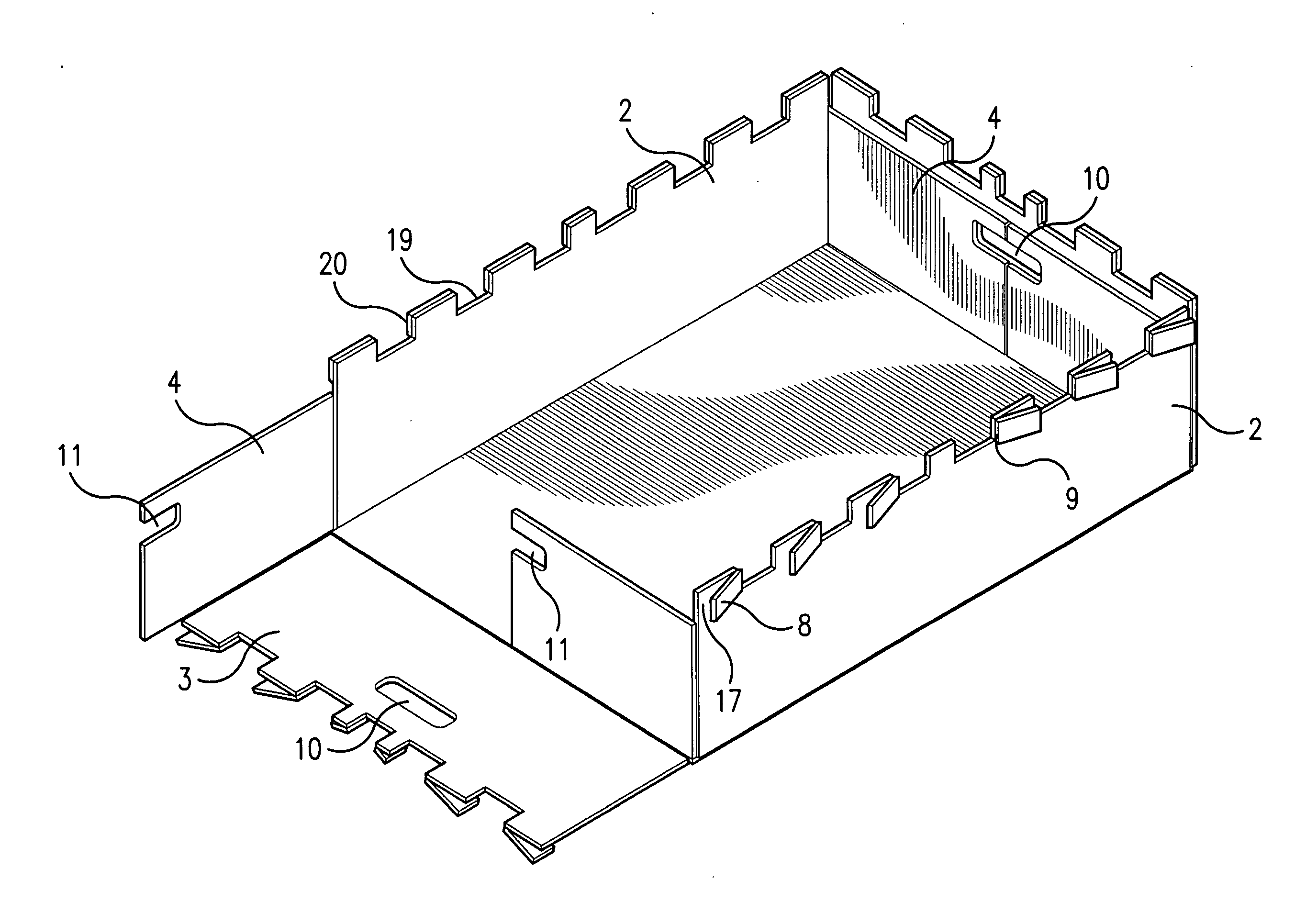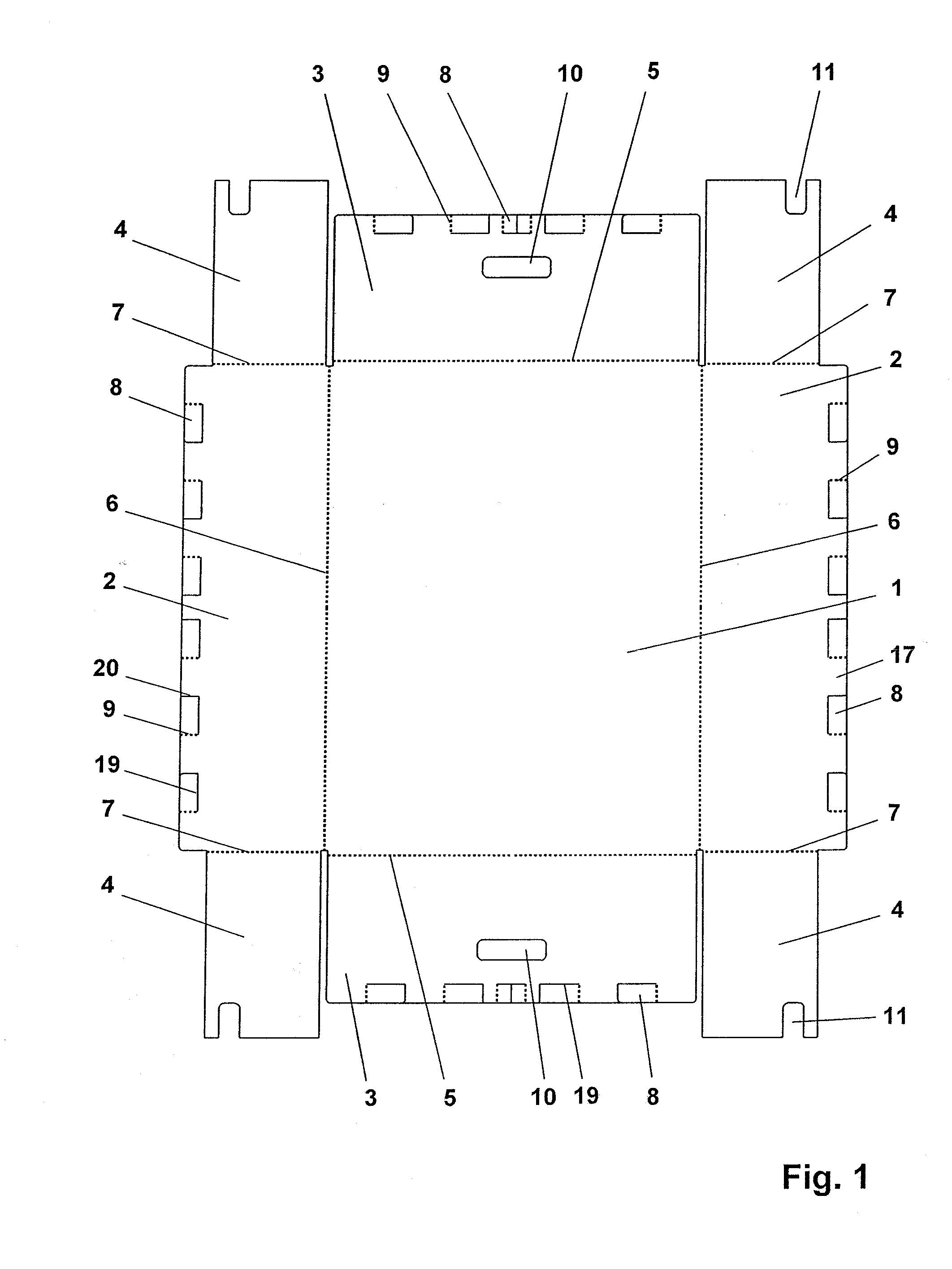Storage and transport container
a technology for storage containers and transport containers, applied in the direction of rigid containers, containers, packaging, etc., can solve the problems of insufficient carrying capacity, complicated production, and additional complexity, and achieve the effects of low weight, low cost, and low production cos
- Summary
- Abstract
- Description
- Claims
- Application Information
AI Technical Summary
Benefits of technology
Problems solved by technology
Method used
Image
Examples
Embodiment Construction
[0027]The described exemplary embodiment is a preferred variant of a container for storing and transporting small parts for automobile production. The finished storage and transport container should have a size of 800×600×250 (L×W×H in mm).
[0028]FIG. 1 is a top view of a container blank comprising a one-piece, 5-mm thick plastic hollow sheet. A contour is produced by means of a plotter, creating a bottom 1, two side walls 2 that can be folded about a fold 6, and two end walls 3 that can be folded about a fold 5. Two corner flaps 4 that can be folded inward about a fold 7 are formed on each of the two side walls 2. It is important that all of the edges are parallel. The corner flaps 4 are long enough that when they are folded in the assembled condition they cover the width of the end wall 3. There are notches 11 on the corner flaps 4 for grips 18 that can be inserted later. Grip openings 10 are also included in each of the two end walls 3. The folds 5, 6, 7 are also added in using th...
PUM
 Login to View More
Login to View More Abstract
Description
Claims
Application Information
 Login to View More
Login to View More - R&D
- Intellectual Property
- Life Sciences
- Materials
- Tech Scout
- Unparalleled Data Quality
- Higher Quality Content
- 60% Fewer Hallucinations
Browse by: Latest US Patents, China's latest patents, Technical Efficacy Thesaurus, Application Domain, Technology Topic, Popular Technical Reports.
© 2025 PatSnap. All rights reserved.Legal|Privacy policy|Modern Slavery Act Transparency Statement|Sitemap|About US| Contact US: help@patsnap.com



